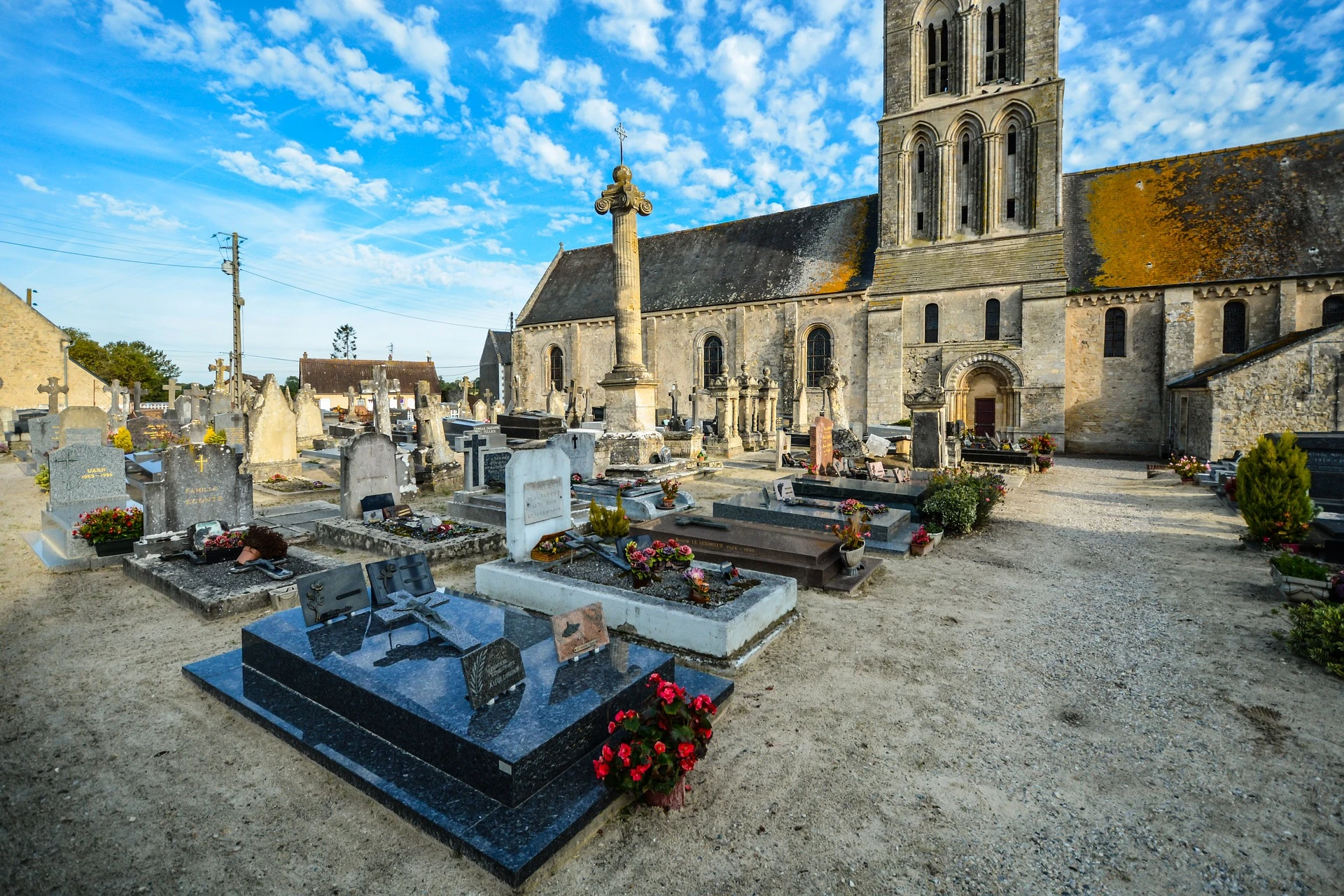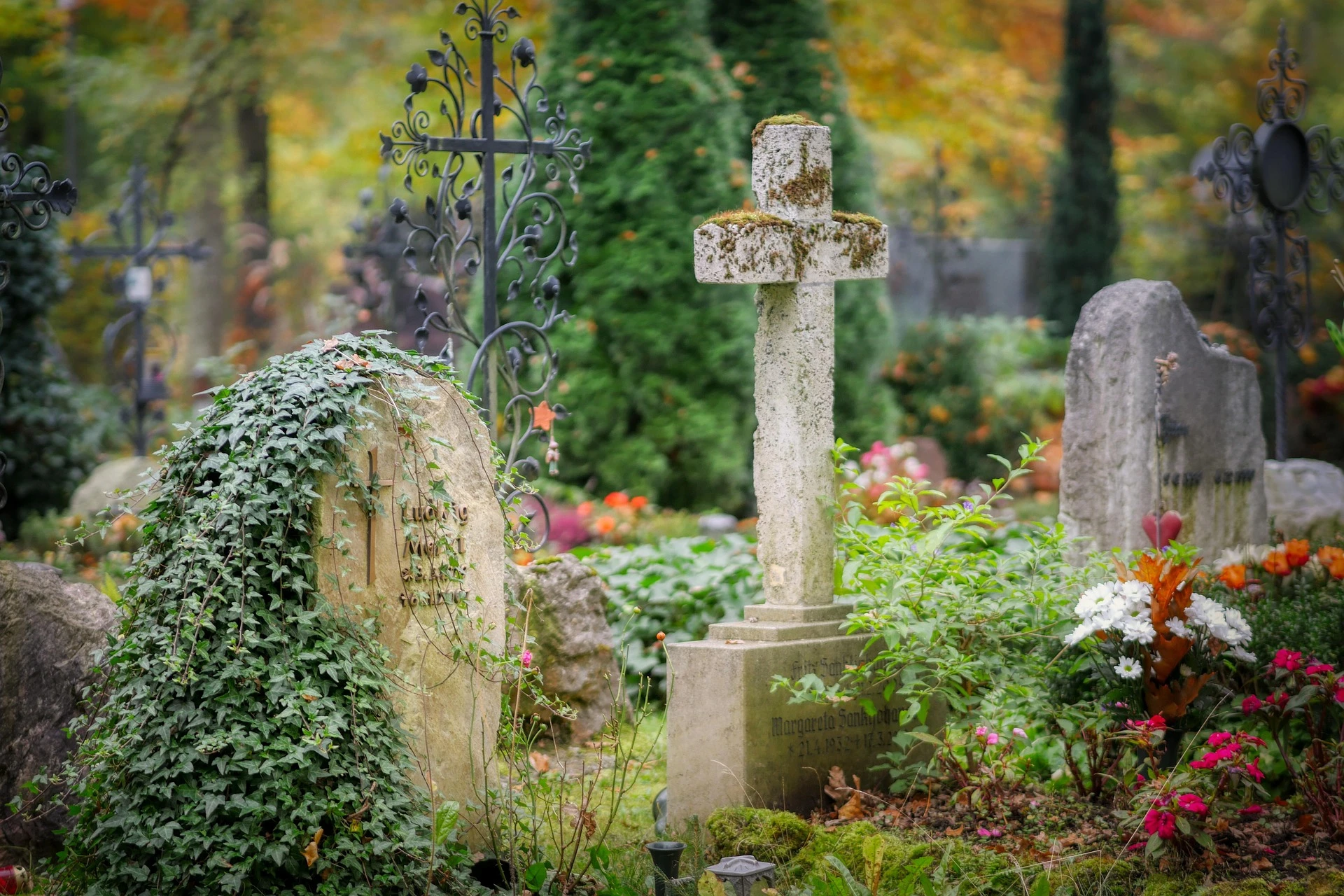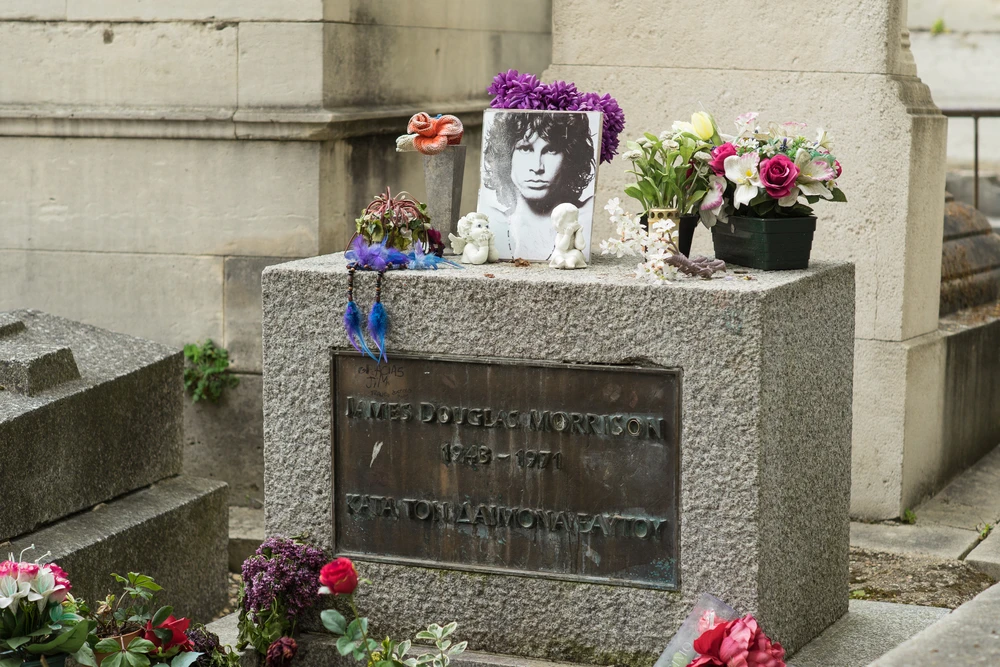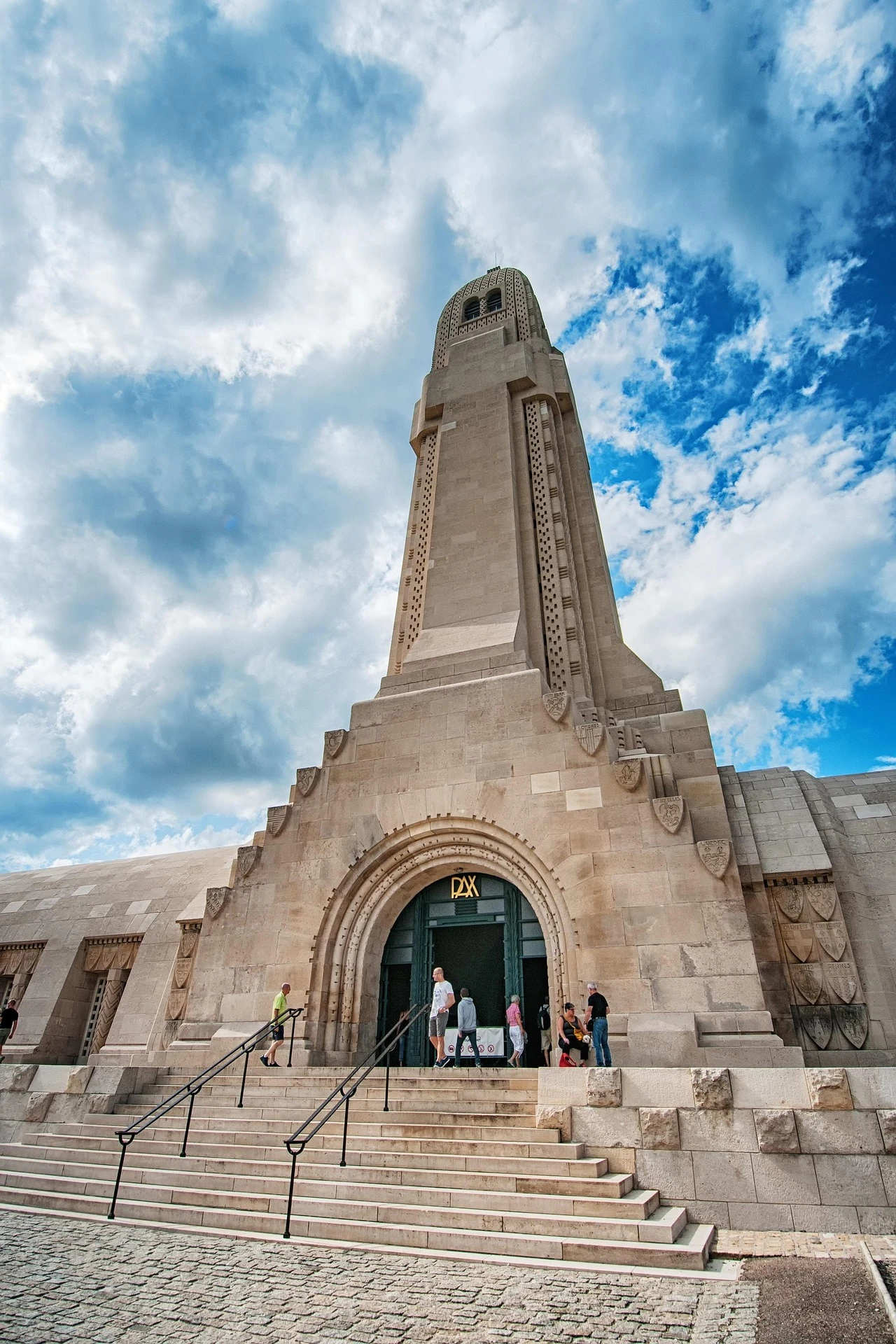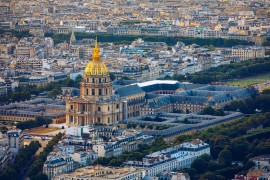The cemetery around the church: a Christian tradition
In Gallo-Roman times, cemeteries were already located outdoors. Gallo-Romans burned the bodies of their dead, and graves were discovered, often along the roadside, when arriving in town. It was Christianity that changed this tradition in the part of Gaul that became France. Indeed, there was no longer any question of burning bodies, since Christians expected bodies to be resurrected. No body, no resurrection, can you imagine? So the bodies were buried.
And if we're going to be buried, we might as well do it as close as possible to God's place: the church. And even the altar of the Church, where Mass was celebrated. As a result, the wealthy, especially the nobility, got into the habit of being buried as close as possible to the altar. In a dedicated chapel, in a tomb, but very close to the altar. Some were buried in the aisles, and in some very very old churches, you can still find such tombs in the aisle.
In very small churches indeed, since at the end of the French Revolution, because in the midst of the de-Christianization of France and in order to find saltpetre and enough to shoot at the coalised countries against France, it was ordered to dig up the nobles buried in the churches. For the others, the less wealthy, they were buried in the cemetery, located around the church. A cemetery often surrounded by a wall, with a low wall to climb over, to prevent animals from digging up the dead.
A cemetery in Normandy: one of the few around the church as before the French Revolution. Image by user32212 de Pixabay
The French Revolution changes everything
This is one of his decrees, the consequences of which are still visible today. As a hygienic measure, to ward off disease, the Republic ordered that the dead be buried in a new, dedicated place, just outside the commune. This led to the creation of cemeteries, which became communal and therefore the responsibility of the commune. They become secular, and you can be buried there if you're not Christian, which is complicated or even forbidden in cemeteries before the Revolution.
How many cemeteries are there in France?
par Albrecht Fietz de Pixabay
There are over 40,000 cemeteries in France. This is due to the tradition of communes having their own burial grounds, but also to the existence of private, military or denominational cemeteries.
Which is the largest cemetery in France?
The Parisian cemetery of Pantin is the largest. At over 100 hectares, it far exceeds the famous Père-Lachaise, despite being better known.
Père La Chaise cemetery: the most famous of all
Jim Morrisson's grave at the Père La Chaise cemetery in Paris / photo by HUANG Zheng/Shutterstock.com
It's the most famous Père La Chaise cemetery in Paris and France. Not for its size (43 hectares), nor for the number of funeral concessions (70,000) but because it is the resting place of many celebrities. Jim Morrison (whose grave is guarded), Balzac, Appolinaire, Yves Montand, Oscar Wilde. Some tombs are astonishing, such as that of Allan Kardec, spiritist and clairvoyant, which is flowered all year round, or that of Victor Noir. On the tombstone, the journalist's bronze recumbent lies as he was after his sudden death. He's reclining, wearing tight-fitting pants. So tight that you can see the shape of his sex. A shape you can't miss since, while the grave is green from the passage of time, the sex part shines. This is because this sex is seen as a symbol of fertility and people sometimes rub it to have children...
Victor Noir's grave at the Père La Chaise cemetery in Paris / photo by Andrea Izzotti/Shutterstock.com
Montmartre cemetery
In Paris, there's also the smaller Montmartre cemetery. Here you'll find the graves of Michel Berger, Dalida, and the famous Samson family. A family of executioners spanning several generations, and whose most famous members were at work bringing down hundreds of heads during the French Revolution. One of them notably died slipping on blood as he tried to brandish a head and show it to the people assembled around the scaffold.
France's smallest cemetery
And perhaps the most moving, is located in Normandy just outside Caumont-l'Éventé. Here lies Lieutenant James Gerald Marshall-Cornwall, who died in 1944 during the Battle of Normandy a few days after D.DAY.
Military cemeteries
American cemetery in Normandy / photo by Alzheimhurt/Shutterstock.com
There are many, and for good reason, France has been the scene of many wars. Most French military cemeteries are located in northern and eastern France. Perhaps the most famous is the Douaumont ossuary, near Verdun, with a cemetery in front of this enormous building, complete with tower (a lighthouse), and containing the remains of the unidentified bodies of 140,000.
The entrance to the Douaumont ossuary near Verdun / image chosen by Monsieur de France Loyloy Thal from Pixabay
There are also many American cemeteries. Their territory was conceded by the French Republic to the United States of America, so heroes are laid to rest on American soil. Some are very well known, such as the Colleville cemetery in Normandy, or Saint-James. There are also German, English and Canadian cemeteries...
France's most beautiful cemeteries
The landscaped cemetery of La Madeleine in Amiens, a listed historic monument, has tall trees, melancholy tombs and paths that take the detours that every human life is bound to take, whether it likes it or not.
In Bonifacio, Corsica, there's the sublime marine cemetery, with its tombs facing the deep blue sea. The same impetus applies to Sète, from where the view is splendid for the spirits of our predecessors, among them Paul Valéry or Jean Vilar.
Bonifacio Marine Cemetery in Corsica / photo par Mor65_Mauro Piccardi/Shutterstock.com
All Saints' Day, a truly French tradition
Chrysanthemums a true tradition. Image by Andrey from Pixabay
The time when cemeteries are at their most flowery and visited remains unquestionably the November 1st period. For All Saints' Day, many French people come to pay their respects at the graves of their loved ones. 35,000,000 people claimed to do so 2 years ago, or nearly one in two French people.
While the tradition of flowering graves at All Saints' Day is ancient, that of placing chrysanthemums on them was created by President of the Republic Raymond Poincaré, who asked that the graves of soldiers who died for France in the First World War be flowered. The chrysanthemums blooming at that time, we chose them. When war memorials were created a few years later, the tradition of chrysanthemums remained, and not just to bloom the memory of soldiers.
The Père La Chaise cemetery in Paris in Autumn / photo by Elena Dijour/Shutterstock.com
FAQ: Visiting cemeteries in France
1. Can you visit cemeteries in France freely?
Yes, most public cemeteries welcome visitors—they are open to the public during set hours. However, they are not parks: you must respect the peace and quiet, private or maintenance areas may be restricted, and some areas are not accessible.
2. What are the usual opening hours?
Hours vary depending on the municipality and season. In general, cemeteries open in the morning (often between 8:00 a.m. and 10:00 a.m.) and close in the late afternoon (around 5:00 p.m. to 7:00 p.m.). It is essential to check local hours before visiting.
3. Is there an admission fee to visit famous cemeteries (e.g., Père Lachaise)?
No, admission is free for most cemeteries. However, some very touristy sites may offer paid guided tours or special areas with an admission fee.
4. Are there guided tours or themed tours?
Yes. Many large cities offer guided tours, audio guides, or themed tours (celebrities, funerary art, local history). For the Père Lachaise Cemetery, for example, there are themed tours with interactive maps.
5. How can I locate a specific grave or monument?
Some cemeteries have interactive terminals, maps, and digital resources. You can also ask the caretaker or the cemetery department at the town hall for the location (division, row, number).
6. Which cemeteries are particularly worth visiting?
Here are a few popular examples:
- The Père Lachaise Cemetery (Paris), for its famous residents and romantic charm
- The Montparnasse Cemetery (Paris)
- The Montmartre Cemetery (Paris)
- The marine cemetery in Sète
- Military cemeteries (Normandy, Somme) as places of remembrance
7. Is it respectful or acceptable to take photos in cemeteries?
Yes, but with caution: you must respect those who are paying their respects, any work in progress, and local regulations. No flash or intrusive poses in front of private graves.
8. Can you visit ossuaries or underground crypts?
Sometimes, in certain cemeteries or associated sites (e.g., the Catacombs of Paris), access to crypts or ossuaries is possible, but often supervised or subject to a fee. You should check the conditions of access in advance.
9. What should you know about military or war cemeteries?
Military cemeteries are solemn places of remembrance. They often feature rows of identical graves, memorials, and historical explanations of the conflicts. Respect is particularly important (silence, no disturbances).
10. Why visit a cemetery? What can you learn?
Visiting a cemetery often means discovering:
- local and national history, through names, periods, and events
- funeral art (sculptures, steles, symbols)
- a place of remembrance and reflection, sometimes a place of biodiversity or peaceful landscape

